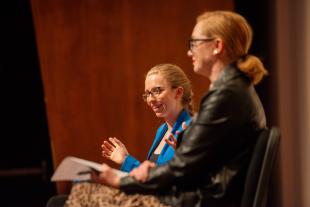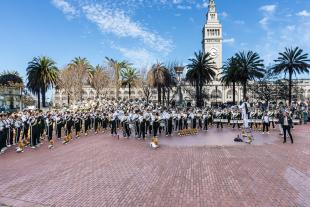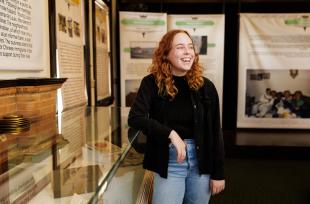Anthropology Students Work with Artifacts They Excavated — and They’ll Be on Display Soon
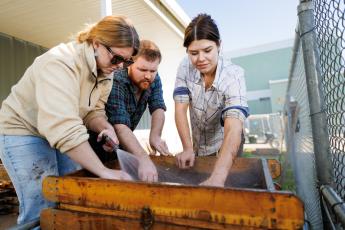
In winter quarter, students in ANT 311: Archaeological Laboratory Methods cleaned and cataloged hundreds of century-old artifacts — including fish bones, pottery fragments and metal parts — in hopes of better understanding a part of California’s history.
The artifacts, which the same cohort of students unearthed during a four-day archaeological excavation of a Japanese American farmstead land in 2024, will help enrich academic research on the lives of immigrant tenant farmers who lived on the Pecho Coast before World War II. And you may be able to get a closer look at some of those artifacts in a few weeks, when a student-produced exhibit on the farmstead opens at the History Center of San Luis Obispo County.
The farmstead that Cal Poly excavated last year near Diablo Canyon belonged to the Yoshida family. The family immigrated from Japan and settled near Point Buchon in 1928, eventually raising 10 children on the farmstead while they grew bush peas, Brussels sprouts, artichokes and lettuce. After moving to a nearby property, the Yoshidas were forced off the land in 1942, when Executive Order 9066 led to the mandatory incarceration of all Japanese and Japanese Americans.
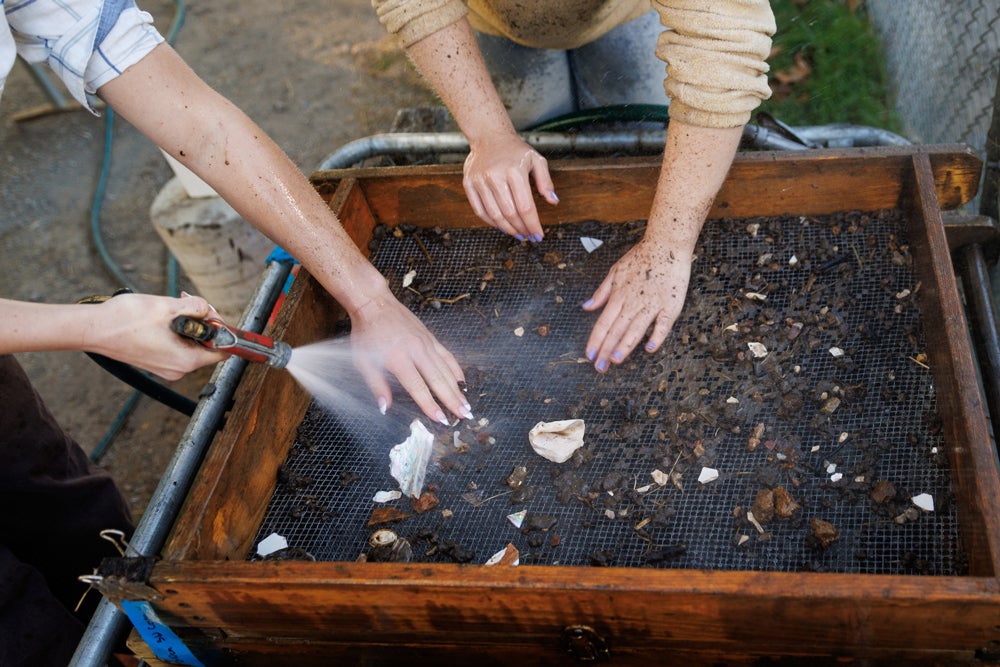
When the ANT 311 course began in January, students first wet screened the contents of dozens of buckets of soil and objects they brought to campus from last year’s excavation, using water to separate dirt from the artifacts. After that, students performed another round of sorting by hand inside the lab.
“When we clean artifacts, we just use toothbrushes and old bowls,” said anthropology and geography student Lacey May. “It's really low tech, but I kind of love that.”
The students also cataloged important details, like where the object was found at the dig, at what depth it was discovered and whether it was dry screened at the excavation. Everything was sorted into meticulously labeled bags.
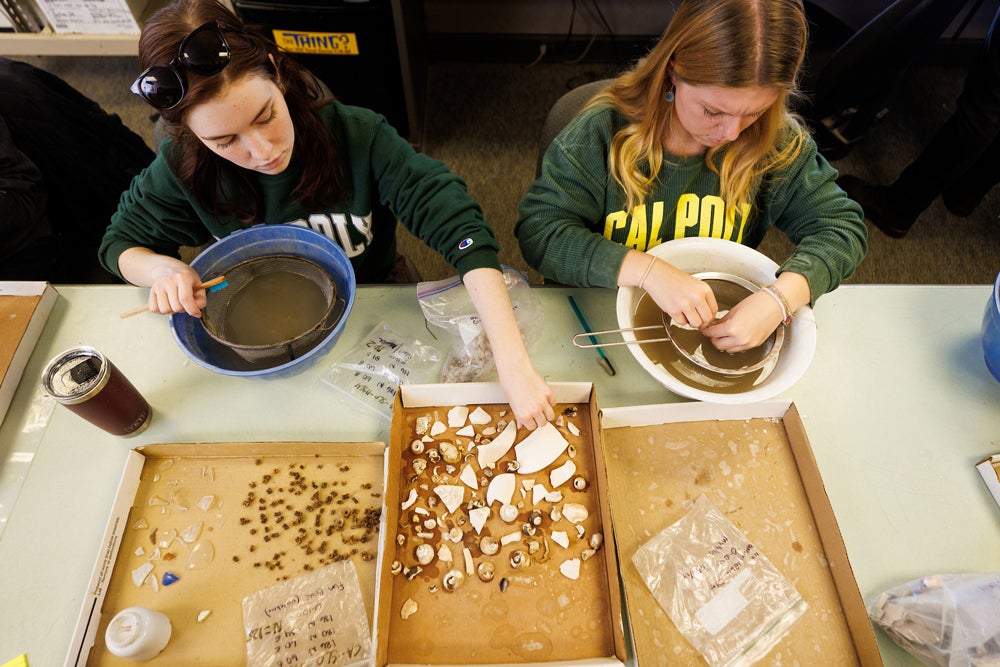
“We organize them by what type of material are they — ceramic, bone, shell, metal — and then further separate those,” explained anthropology and geography student Emma Bowman. “Say we're doing ceramics, that's going to be separated by whether it’s porcelain, whether it’s earthenware, or what pattern or paint is on the outside.”
Professor and archaeologist Terry Jones, who teaches the ANT 311 class and led the excavation, said the students processed more than 1,000 objects that revealed patterns in the Yoshida family’s daily life, especially what they ate.
“There's a wide variety of species of fish represented in the collection — way more than we recognized when we were actually out there digging,” said Jones. He connected with a fish bone specialist who compared Cal Poly’s findings with collections at the California Academy of Sciences to see what the family caught from the Pacific.
Jones added that the plethora of shells the team found in the excavation connected to major historical events of the era. In previous excavations focusing on Chumash populations from thousands of years ago, Jones found evidence of shellfish — particularly mussels — as a diet staple. In the 1930s, the Yoshidas seemed to favor red abalone and were able to harvest massive specimens. The size of the abalone likely increased because its natural predator, the sea otter, was hunted to near extinction at that time. The Yoshidas also ate turban snails, which Jones says factored into a Japanese dish called nishi.
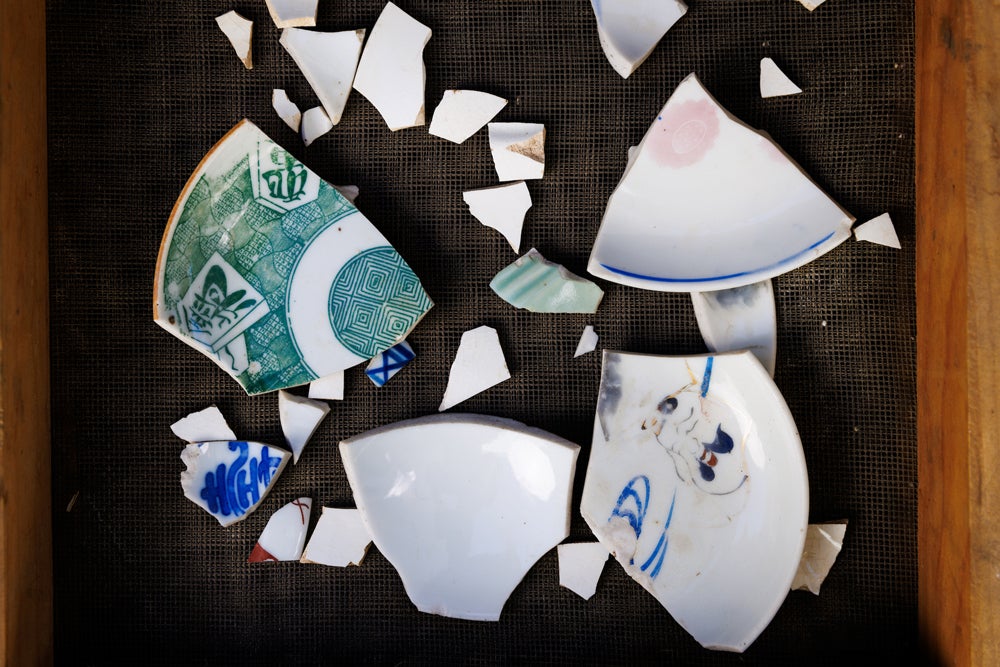
To find more information about the dishware and pottery found at the site, the class partnered with Rachel Burgess (Anthropology and Geography ‘21), now a graduate student at CSU Chico who participated in the original excavation. Her master’s thesis research will help identify and date different types of pottery to round out the story about what the Yoshidas could have brought to the U.S. from Japan.
Even when the work became tedious, the students said they remembered the energy they felt pulling artifacts from the soil almost a year ago alongside the Yoshida family. Bowman was most excited to see a toy fireman figurine they had discovered, while May was intrigued by a metal clasp from a traditional Japanese sock.
“It was really nice to continue on the project with people who were really invested and have prior knowledge of it,” Bowman said of Jones and her classmates.
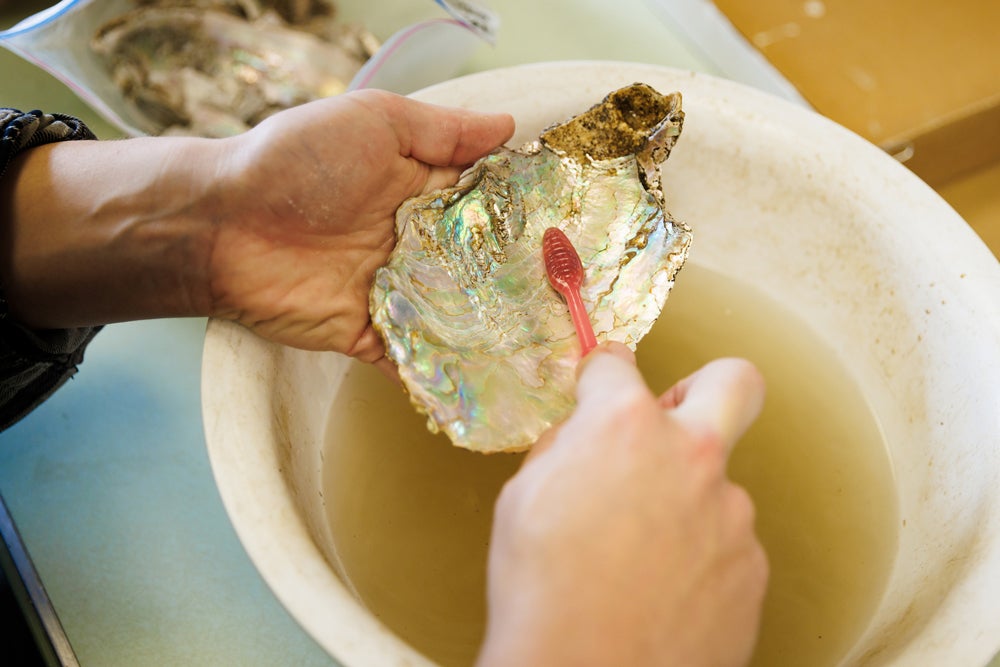
After a 10-week sprint to process each artifact, a team of five students — Bowman, May, Annie Pagel, and Jesse Horsley — presented along with Jones at the Society for California Archaeology meetings in San Francisco in March. May noted the team received positive feedback and interesting questions about their poster presentation, which is laying the groundwork for peer-reviewed research they hope will appear in the journal California Archaeology.
“Our site is pretty unusual given the time period that it represents and that these were rural folks,” said Jones. “We're going to contribute to this overall body of knowledge about Japanese American contributions to California history.”
One of the core facets of the project has been working with the living members of the Yoshida family, including children and grandchildren of the original members who lived on the Pecho coast. Led by sisters Grace and Irene Yoshida, more than 30 family members — aged 3 to 77 — attended the excavation and continue to work with the student team.
Jones, who has a long relationship with PG&E and has excavated other sites involving Chumash artifacts on Diablo Canyon land, said that this particular excavation and subsequent research gave him and his students a rare opportunity to connect with the more recent past and the living descendants of farmers near the coast.
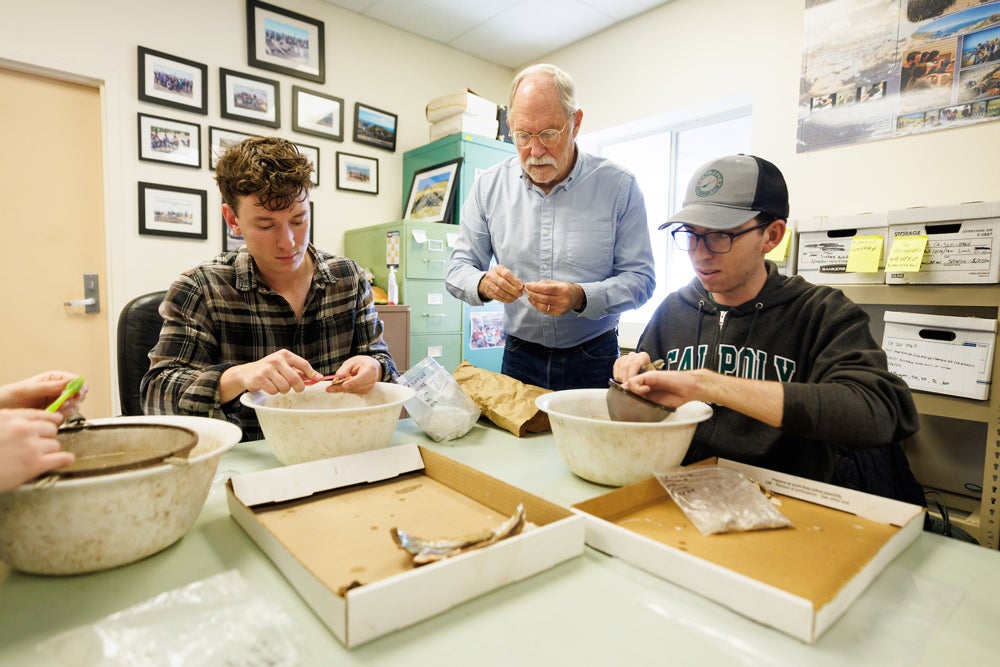
“I'm very fortunate to be going out on a high note,” said Jones, who is retiring this summer. “Every step of the way, it's been a really powerful experience for me.”
But the team’s work doesn’t stop here. Thanks to a senior project spearheaded by May, Bowman, Pagel, Horsely and graduate student Collin Marfia, the public will get a chance to see these artifacts up close next month.
The exhibit, titled, “A Dream Interrupted: Remembering Life on a Pre-Incarceration Japanese American Farmstead,” opens Friday, May 30, from 6:30-8 p.m. at the History Center of San Luis Obispo County, located at 696 Monterey St. Organizers say the exhibit will run for about two months.
Watch a video about the excavation on Cal Poly's YouTube channel.
Want more Learn by Doing stories in your life? Sign up for our monthly newsletter, the Cal Poly News Recap!


